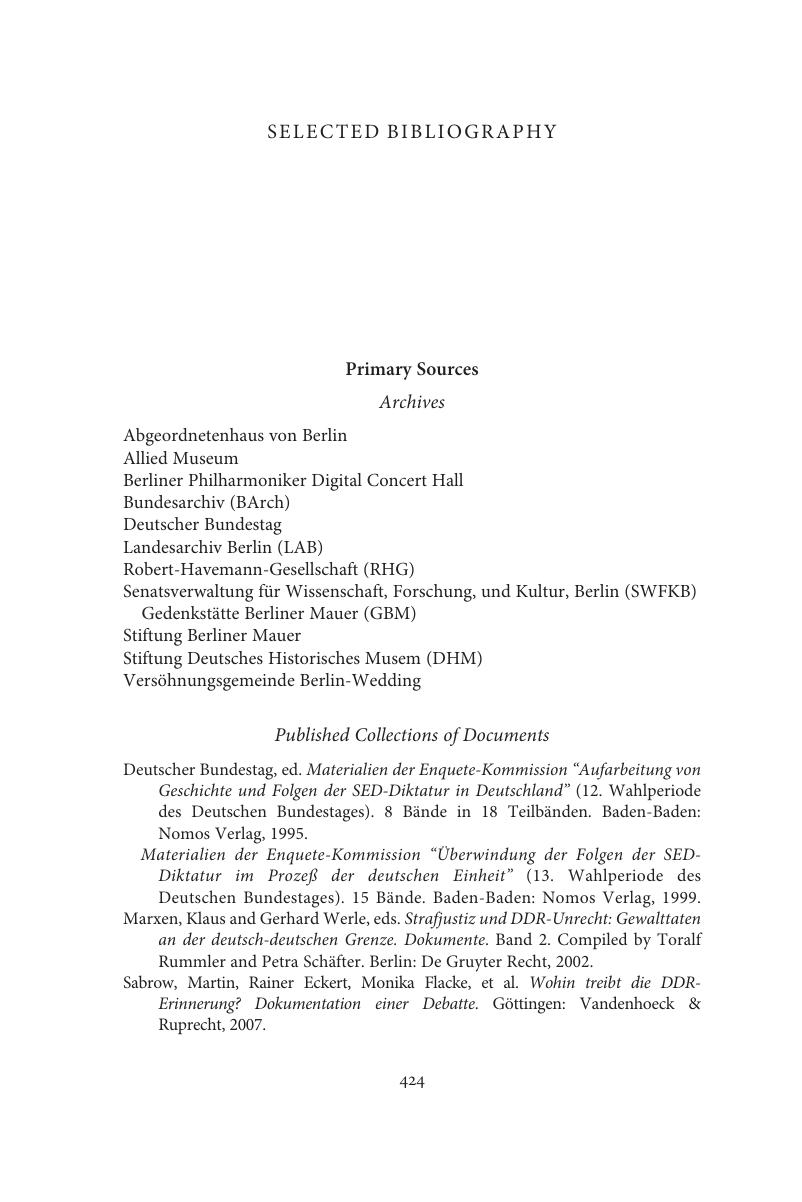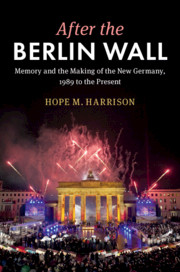Book contents
- After the Berlin Wall
- After the Berlin Wall
- Copyright page
- Dedication
- Contents
- Figures
- Acknowledgments
- Abbreviations and German Terms
- Introduction: The Berlin Wall and German Historical Memory
- 1 Divergent Approaches to the Fall of the Wall
- 2 The Fight over Memory at Bernauer Strasse
- 3 Creating a Berlin Wall Memorial Ensemble at Bernauer Strasse
- 4 Remembering the Wall at Checkpoint Charlie
- 5 The Berlin Senate’s “Master Plan for Remembering the Berlin Wall”
- 6 The Federal Government and Memory of the Berlin Wall
- 7 Victims and Perpetrators
- 8 Conflicting Narratives about the Wall
- 9 Celebrating Heroes and a New Founding Myth
- Conclusion: Memory as Warning
- SELECTED BIBLIOGRAPHY
- Index
- References
SELECTED BIBLIOGRAPHY
Published online by Cambridge University Press: 06 September 2019
- After the Berlin Wall
- After the Berlin Wall
- Copyright page
- Dedication
- Contents
- Figures
- Acknowledgments
- Abbreviations and German Terms
- Introduction: The Berlin Wall and German Historical Memory
- 1 Divergent Approaches to the Fall of the Wall
- 2 The Fight over Memory at Bernauer Strasse
- 3 Creating a Berlin Wall Memorial Ensemble at Bernauer Strasse
- 4 Remembering the Wall at Checkpoint Charlie
- 5 The Berlin Senate’s “Master Plan for Remembering the Berlin Wall”
- 6 The Federal Government and Memory of the Berlin Wall
- 7 Victims and Perpetrators
- 8 Conflicting Narratives about the Wall
- 9 Celebrating Heroes and a New Founding Myth
- Conclusion: Memory as Warning
- SELECTED BIBLIOGRAPHY
- Index
- References
Summary

- Type
- Chapter
- Information
- After the Berlin WallMemory and the Making of the New Germany, 1989 to the Present, pp. 424 - 443Publisher: Cambridge University PressPrint publication year: 2019



